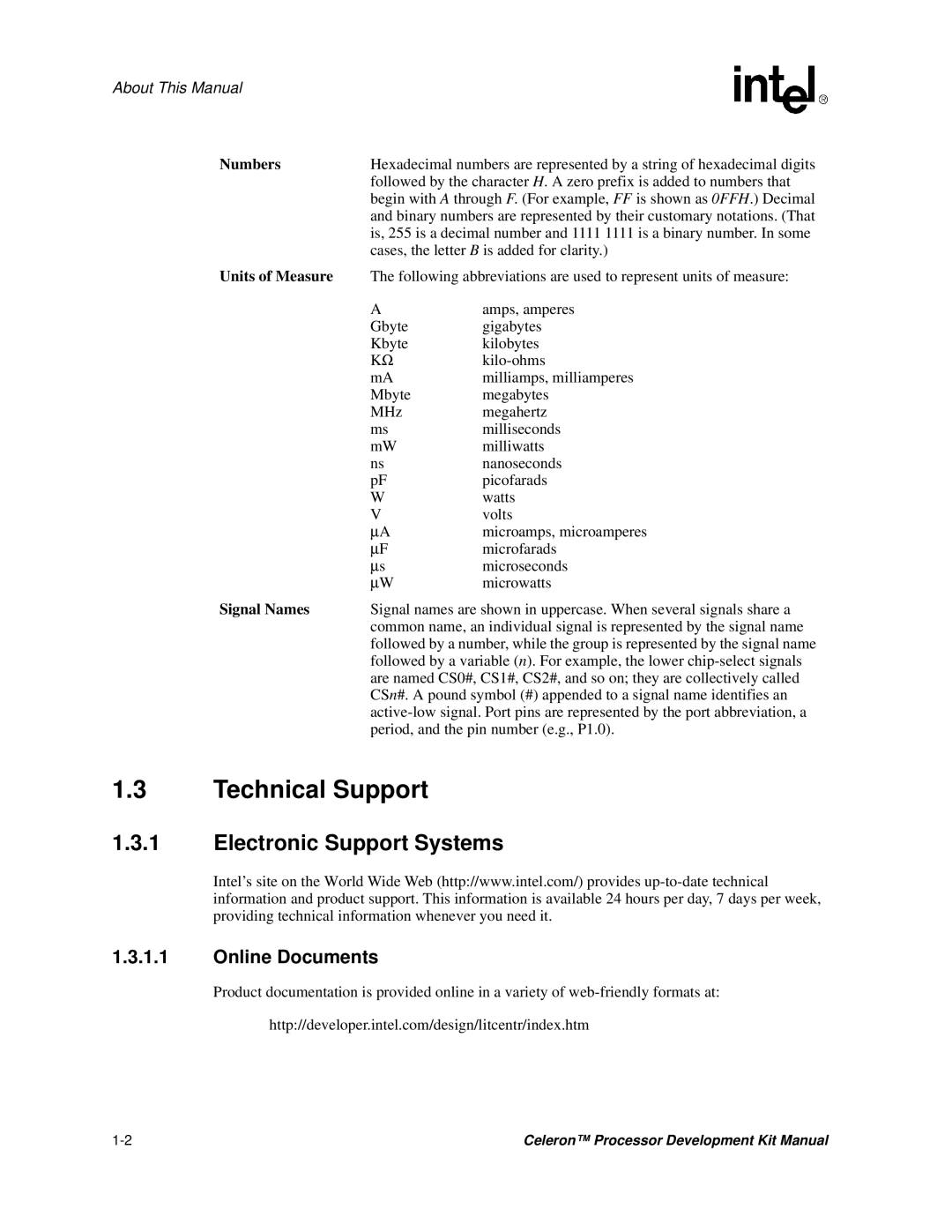About This Manual
Numbers | Hexadecimal numbers are represented by a string of hexadecimal digits | |
| followed by the character H. A zero prefix is added to numbers that | |
| begin with A through F. (For example, FF is shown as 0FFH.) Decimal | |
| and binary numbers are represented by their customary notations. (That | |
| is, 255 is a decimal number and 1111 1111 is a binary number. In some | |
| cases, the letter B is added for clarity.) | |
Units of Measure | The following abbreviations are used to represent units of measure: | |
| A | amps, amperes |
| Gbyte | gigabytes |
| Kbyte | kilobytes |
| KΩ | |
| mA | milliamps, milliamperes |
| Mbyte | megabytes |
| MHz | megahertz |
| ms | milliseconds |
| mW | milliwatts |
| ns | nanoseconds |
| pF | picofarads |
| W | watts |
| V | volts |
| μA | microamps, microamperes |
| μF | microfarads |
| μs | microseconds |
| μW | microwatts |
Signal Names | Signal names are shown in uppercase. When several signals share a | |
| common name, an individual signal is represented by the signal name | |
| followed by a number, while the group is represented by the signal name | |
| followed by a variable (n). For example, the lower | |
are named CS0#, CS1#, CS2#, and so on; they are collectively called CSn#. A pound symbol (#) appended to a signal name identifies an
1.3Technical Support
1.3.1Electronic Support Systems
Intel’s site on the World Wide Web (http://www.intel.com/) provides
1.3.1.1Online Documents
Product documentation is provided online in a variety of
http://developer.intel.com/design/litcentr/index.htm
Celeron™ Processor Development Kit Manual |
